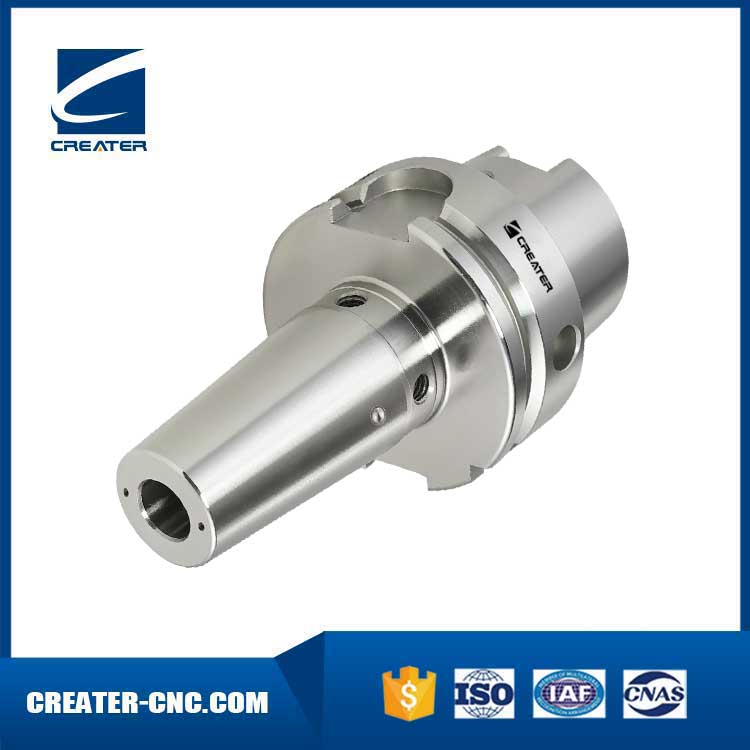News
-
Contact us
- Office Address: 253000, Chongde 5th Avenue, Gaotie New District, Dezhou, China
- Tel: +86-534-8127588
- Mob: +86-18865728871
- Email: sales@bright-tools.com
- Skype: sdjinjie101
In modern machining, CNC toolholders are one of the essential tools. They are used to hold different types of tools, such as end mills, drills, and taps. Choosing the right CNC toolholder not only improves machining efficiency, but also ensures machining accuracy. This article will explore different types of CNC toolholders and how to choose them based on actual needs.
Different types of CNC toolholders
Cylindrical straight shank toolholders
Cylindrical straight shank toolholders are a common CNC toolholder that can evenly clamp the tool to ensure the best runout accuracy during milling, drilling, and reaming. Its structure is simple, but without a flat or locking function, it has a large limit on torque and axial force, which may cause the tool to shift in the toolholder. Therefore, when choosing, pay attention to the working conditions to ensure that the clamping capacity of the toolholder is not exceeded.
Creater Hydraulic toolholders
Creater Hydraulic toolholders have become the first choice for many high-precision machining due to their high clamping force and excellent runout accuracy. Its loading and unloading process is simple and does not require additional equipment. The collet design of hydraulic toolholders can reduce the number of toolholders required while effectively delivering coolant, making them particularly suitable for situations where efficient cutting and good cooling are required. When selecting hydraulic toolholders, the material and tolerance requirements of the workpiece should be considered to ensure the best processing results.
Creater Shrink Fit toolholders
Creater Shrink Fit toolholders are a type of CNC toolholder that uses the principle of thermal expansion and are mainly used for solid carbide round shank tools. The toolholder aperture is slightly smaller than the toolholder diameter, and the tool can be easily replaced after heating. Thermal expansion toolholders are suitable for production sites where tool setting is performed in the tool room, and can provide medium to high clamping force and good runout accuracy. When selecting thermal expansion toolholders, be sure to ensure that there is appropriate heating equipment to successfully complete the tool replacement.
Considerations for selecting CNC toolholders
Creater Tool type and processing requirements
When selecting CNC toolholders, the first thing to consider is the type of tool used and the processing requirements. For drilling and light milling applications, ER spring toolholders may be an economical choice; for applications that require high clamping force and precision, hydraulic toolholders or thermal expansion toolholders are more suitable.
Material and tolerance requirements
Different materials have different requirements for toolholders. For example, soft metals such as aluminum alloys may not require high clamping force, while hard metals such as stainless steel require stronger clamping capabilities. When selecting CNC toolholders, the material and tolerance of the workpiece must be considered to ensure the stability and accuracy of the processing.
Production scale
Production scale is also a factor that cannot be ignored when selecting CNC toolholders. Large-scale production usually requires fast tool change and high efficiency, so it may be more suitable to use hydraulic toolholders. Mixed production may be more suitable for flexible ER spring toolholders to adapt to the needs of different tools.
When selecting CNC toolholders, it is crucial to consider factors such as tool type, material tolerance and production scale. Different types of CNC toolholders have their own advantages and disadvantages and are suitable for different processing scenarios. Through reasonable selection, processing efficiency can be improved and product processing quality can be ensured. Therefore, in practical applications, rational evaluation and selection of appropriate CNC toolholders will bring significant advantages to your machining process.
Previous :Creater Driven Tool Holders Functions









 Leave a message
Leave a message
